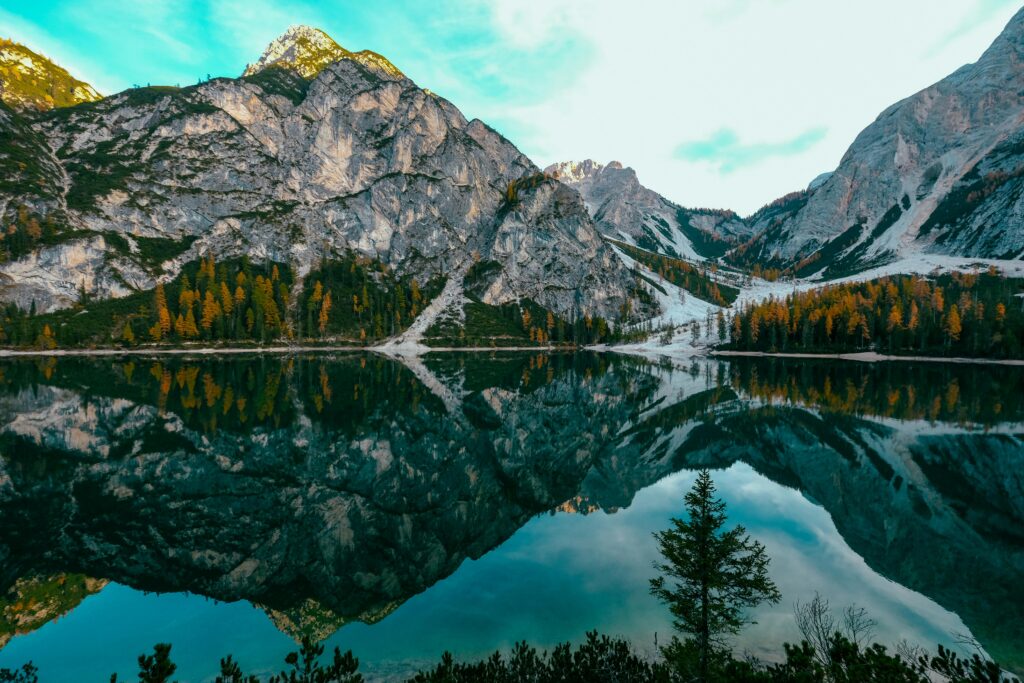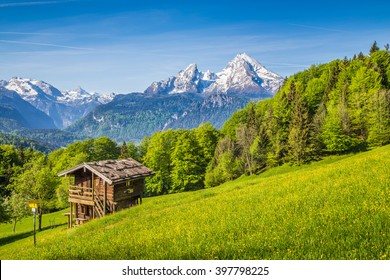The Definitive Guide to Experiencing the Magic of Santai Mountain

An Essential Guide to Visiting Santai Mountain
Nestled just a stone’s throw from the bustling city of Suqian, Santai Mountain (三台山) beckons travelers with its stunning natural beauty and artistic architectural marvels. Imagine a place where vibrant flower fields bloom year-round, and the harmonious blend of nature and culture creates an enchanting atmosphere. At the heart of Santai Mountain lies a breathtaking open-air concert hall, designed to complement the majestic landscape that surrounds it, making it a perfect backdrop for both relaxation and artistic expression.
In this guide, we will explore the essential experiences that Santai Mountain has to offer. From its picturesque lakes and sprawling flower fields to the well-maintained trails that invite hikers of all levels, you’ll discover why this destination is a must-visit for nature lovers and cultural enthusiasts alike. We’ll also delve into practical tips on when to visit, how to get there, and what to bring along, ensuring that your journey to Santai Mountain is both enjoyable and memorable. Prepare to be captivated by the charm of Santai Mountain, where every moment spent in its embrace is a step into a world of beauty and inspiration.
In This Guide
- An Essential Guide to Visiting Santai Mountain
- The Rich History and Legends of Santai Mountain
- Main Highlights: What You Absolutely Can’t Miss
- Planning Your Visit: A Practical Guide
- Tickets: Prices, Booking, and Tips
- How to Get There: A Complete Transportation Guide
- Local Cuisine and Accommodation Nearby
- Frequently Asked Questions
- Final Thoughts on Your Trip
The Rich History and Legends of Santai Mountain
Nestled just outside Suqian, Santai Mountain (三台山) is not only a stunning natural landscape but also a site steeped in rich history and captivating legends. This enchanting area has long inspired poets, scholars, and travelers alike, making it a must-visit destination for those looking to connect with China’s cultural heritage.
Ancient Roots: The Origins of Santai Mountain
The history of Santai Mountain dates back thousands of years, with its origins intertwined with the ancient cultures that populated the region. It is believed that the mountain was revered as a sacred site by early inhabitants who used it as a place for worship and reflection. Historical texts suggest that during the Han Dynasty, the mountain became a prominent site for religious practices, particularly for Taoism and Buddhism, as monks and pilgrims sought solace amid its serene environment.
The Tang Dynasty: Flourishing Culture and Arts
During the Tang Dynasty (618-907 AD), Santai Mountain emerged as a center for artistic and literary pursuits. Poets and scholars flocked to its picturesque landscapes, composing verses that celebrated the mountain’s beauty. One famous poem, attributed to a Tang poet, describes the breathtaking views from the summit, proclaiming the mountain as a muse for creativity and inspiration.
This period also saw the construction of temples and pavilions, many of which still stand today, inviting visitors to explore their intricate architecture and spiritual significance. The harmonious blend of nature and human artistry became a hallmark of Santai Mountain, further solidifying its status as a cultural landmark.
Legends of the Mountain: Tales of Deities and Spirits
Santai Mountain is steeped in folklore, with numerous legends that add a mystical dimension to its allure. One popular tale tells of a celestial deity who descended upon the mountain, bringing with her the gift of eternal spring. It is said that the vibrant flower fields that bloom year-round are a result of her blessings, making Santai Mountain a symbol of renewal and hope.
Another legend speaks of a wise sage who once meditated on the mountain, achieving enlightenment and unlocking the secrets of the universe. Locals believe that those who climb to the peak of Santai Mountain with pure intentions may catch a glimpse of the sage’s spirit, offering guidance and wisdom.
The Ming and Qing Dynasties: A Place of Pilgrimage
The Ming (1368-1644) and Qing (1644-1912) Dynasties marked a significant era for Santai Mountain, as it became a revered pilgrimage site for both Taoists and Buddhists. Temples were expanded and new ones constructed, attracting devotees who sought spiritual fulfillment. The mountain became a gathering place for festivals, where people celebrated seasonal changes and prayed for good fortune.
Visitors today can explore these ancient temples, each telling its own story through intricate carvings and serene courtyards. As you wander through the grounds, you may hear echoes of chanting and prayers, remnants of the vibrant spiritual life that flourished in centuries past.
A Modern-Day Retreat
In contemporary times, Santai Mountain has transformed into a popular destination for both locals and international travelers. Its breathtaking views, lush landscapes, and well-preserved historical sites provide a perfect backdrop for nature lovers and history enthusiasts alike. The nearby Santai Mountain Forest Park offers a variety of recreational activities, from hiking to picnicking, ensuring that the mountain remains a cherished escape from the hustle and bustle of city life.
Conclusion: A Tapestry of Nature and Culture
Santai Mountain is more than just a picturesque landscape; it is a testament to China’s rich history, filled with legends that breathe life into its stones. Whether you are drawn by the allure of its natural beauty or the stories of those who have come before, a visit to Santai Mountain promises an unforgettable journey through time and tradition. As you stand at its summit, take a moment to reflect on the countless souls who have sought inspiration and solace in this remarkable place—a true gem in the heart of Jiangsu Province.

Santai Mountain.
Main Highlights: What You Absolutely Can’t Miss
Majestic Flower Fields
One of the crown jewels of Santai Mountain Forest Park is its breathtaking flower fields, which bloom vibrantly throughout the year. Particularly in the summer, these fields become a riot of colors, perfect for leisurely strolls and photography sessions. The sight of the flowers swaying gently in the breeze against the backdrop of the mountain is nothing short of mesmerizing.
Practical Tip: Visit early in the morning to enjoy the cooler temperatures and softer light, ideal for capturing stunning photographs. Bring a picnic to savor amidst the blooms!
The Open-Air Concert Hall
Nestled within the mountain park is a magnificent open-air concert hall, an architectural marvel that harmoniously blends with the surrounding nature. This impressive venue not only hosts concerts but also serves as a gathering place for various cultural events. The design and acoustics are such that even the softest notes resonate beautifully with the natural acoustics of the mountains.
Practical Tip: Check the local events calendar prior to your visit; attending a performance here can be a memorable experience, allowing you to enjoy live music in an extraordinary setting.
Serene Lake
The tranquil lake at Santai Mountain invites visitors to unwind and reflect. Surrounded by lush greenery and with stunning mountain views, it’s the perfect spot for a leisurely boat ride or simply to relax by the water’s edge. The calm waters reflect the changing colors of the sky, creating a picturesque scene throughout the day.
Practical Tip: Bring binoculars to spot local wildlife around the lake. Early mornings are the best times to catch sight of birds and other animals coming to drink.
The Resort Experience
For those wishing to extend their stay, the Santai Mountain Resort offers luxurious accommodations that complement the natural beauty of the area. With amenities that include spas and gourmet dining, it’s an ideal retreat for those looking to relax after a day of exploration.
Practical Tip: Consider booking a room with a mountain view to wake up surrounded by stunning landscapes. Look for package deals that might include meals or spa treatments for an added indulgence.
Scenic Hiking Trails
Santai Mountain features a network of hiking trails that cater to various skill levels. Whether you’re an avid hiker or a casual walker, the trails offer a chance to immerse yourself in the lush forest, encounter hidden viewpoints, and enjoy panoramic vistas of Suqian.
Practical Tip: Wear sturdy hiking shoes and bring plenty of water. Don’t forget to take breaks to soak in the views; some of the best photo opportunities await at these scenic spots.
Cultural and Artistic Installations
As you wander through Santai Mountain, keep an eye out for various cultural and artistic installations that adorn the park. These pieces often draw inspiration from the surrounding nature and reflect the rich cultural heritage of the region, providing insight into local traditions and artistic expression.
Practical Tip: Take the time to read the plaques that accompany each installation; they often tell fascinating stories and give context to the art you see.
Sunset Viewing Points
Finally, don’t miss the chance to experience the stunning sunsets from designated viewing points around the park. The sky transforms into a canvas of vibrant oranges, pinks, and purples as the sun dips below the horizon, providing a perfect end to your day at Santai Mountain.
Practical Tip: Arrive at the viewing points at least 30 minutes before sunset to secure a good spot and enjoy the gradual change of colors in the sky. Bring a light jacket, as it can get chilly once the sun sets.
By exploring these highlights, you will fully appreciate the beauty and tranquility of Santai Mountain Forest Park, making your visit an unforgettable experience.

Santai Mountain.
Planning Your Visit: A Practical Guide
Best Time to Visit
Santai Mountain Forest Park is a year-round destination, but the best time to visit is during the spring and summer months, from April to September. During this period, the weather is pleasantly warm, and the park’s vibrant flower fields are in full bloom, creating a picturesque landscape perfect for outdoor exploration and photography. Fall is also a lovely time to visit, as the foliage transforms into stunning hues of red and gold. Winter may be less appealing due to cooler temperatures, but the serene atmosphere can offer a unique experience for those who enjoy quiet nature walks.
Recommended Itinerary
For a fulfilling day at Santai Mountain, consider the following itinerary:
-
Morning (9:00 AM – 12:00 PM): Start your visit by exploring the scenic flower fields. Capture the vibrant colors and breathtaking views. Enjoy a leisurely stroll around the park, taking in the lush surroundings.
-
Lunch (12:00 PM – 1:00 PM): Head to the nearby resort or a local eatery to savor some regional cuisine. Sampling local dishes will enhance your cultural experience.
-
Afternoon (1:00 PM – 3:00 PM): Visit the impressive open-air concert hall, marveling at its architecture and how it harmonizes with the natural landscape. If available, check for any scheduled performances or events.
-
Late Afternoon (3:00 PM – 5:00 PM): Wind down at the tranquil lake. Consider renting a paddleboat or simply relax by the water, enjoying the serene environment before wrapping up your visit.
Photography Tips
-
Golden Hour: The best time for photography is during the golden hour—shortly after sunrise or before sunset. This will give you soft, warm lighting, enhancing the beauty of the natural surroundings.
-
Vary Your Angles: Experiment with different angles to capture the stunning landscapes. Don’t just shoot from eye level; crouch down or find higher vantage points to give your photos depth.
-
Focus on Details: Capture close-ups of flowers, leaves, and interesting textures in the park. These details will add uniqueness to your photo collection.
-
Include People: To convey the scale and beauty of the park, include people in some of your shots. This adds a sense of life and adventure to your images.
What to Wear
Dress comfortably and appropriately for outdoor activities. Here are some recommendations:
-
Footwear: Wear sturdy walking shoes or hiking boots to navigate the park’s trails comfortably.
-
Clothing: Opt for breathable, moisture-wicking fabrics, especially during warmer months. Layer your clothing to adapt to changing temperatures throughout the day.
-
Accessories: Don’t forget a wide-brimmed hat, sunglasses, and sunscreen for sun protection. A light jacket may be needed in the evenings or during cooler seasons.
Insider Tips
-
Arrive Early: To avoid crowds and enjoy a peaceful experience, arrive at the park as soon as it opens. This also allows you to capture stunning early morning photos.
-
Check for Events: Keep an eye on the park’s schedule for concerts or cultural events that may coincide with your visit. These can enhance your experience and provide unique entertainment.
-
Stay Hydrated: Bring plenty of water, especially if you plan to hike or spend extended periods outdoors. There are limited refreshment options within the park.
-
Explore Beyond the Trail: While the main attractions are engaging, take some time to wander off the beaten path. You may discover hidden gems, such as quiet spots for picnicking or beautiful viewpoints.
-
Engage with Locals: Don’t hesitate to speak with local visitors or park staff. They can share insights, recommendations, or hidden spots that aren’t as well known to tourists.
By following this guide, you’ll ensure a memorable visit to Santai Mountain, filled with breathtaking landscapes and enriching experiences. Enjoy your adventure!

Santai Mountain.
Tickets: Prices, Booking, and Tips
When planning your visit to Santai Mountain, it’s essential to know the ticket prices, what they include, and how to book your adventure. Below is a comprehensive breakdown to help you prepare for an unforgettable day in this stunning natural landscape.
| Ticket Type | Price (CNY) | Includes |
|---|---|---|
| Adult Admission | 80 | Access to the park, flower fields, and lake |
| Child Admission | 40 | Access to the park (children under 1.2m free) |
| Senior Admission | 60 | Access to the park for seniors (aged 60+) |
| Family Package | 200 | Admission for two adults and two children |
Booking Your Tickets
Tickets for Santai Mountain can be conveniently booked online through various platforms, including local travel websites and apps. You can also purchase tickets at the entrance of the park; however, to ensure availability and avoid any last-minute hassles, it’s highly recommended to book in advance, especially during peak tourist seasons and weekends.
Tips for a Smooth Visit
- Plan Ahead: Check the weather forecast and choose a day when you can enjoy the beautiful flower fields and the stunning lake views.
- Time Your Visit: The park is open from 9:00 AM to 5:00 PM, with admission ending at 5:00 PM. Aim to arrive early to maximize your time exploring.
- Consider Guided Tours: If you prefer a more in-depth experience, consider joining a guided tour. This can enhance your understanding of the area’s natural beauty and cultural significance.
By securing your tickets in advance and following these tips, you’ll be well-prepared to explore the breathtaking beauty of Santai Mountain. Enjoy your adventure!
How to Get There: A Complete Transportation Guide
From the Nearest Major City
Getting to Santai Mountain from Suqian
Santai Mountain is conveniently located just a short distance from Suqian, the nearest major city. Here’s how to reach this stunning destination:
By Train:
– From Suqian Railway Station: Trains from Suqian to nearby cities run frequently, but there is no direct train service to Santai Mountain. You can take a train to Xuzhou (approximately 1-1.5 hours) and then transfer to a bus or taxi.
– Cost: Train tickets range from ¥30 to ¥70, depending on the train type (regular or high-speed).
By Bus:
– From Suqian Bus Station: There are direct buses that head towards Santai Mountain. The trip takes about 30 to 40 minutes, depending on traffic. Buses depart regularly throughout the day, making this an affordable and convenient option.
– Cost: A one-way ticket will cost around ¥10 to ¥15.
By Car:
– Driving from Suqian: If you prefer the flexibility of driving, you can rent a car or hire a taxi. The drive to Santai Mountain is approximately 25 kilometers and takes about 30 minutes via the G25 highway.
– Cost: Rental prices for cars typically start at around ¥200 per day, while taxi fares will depend on the distance and time of day.
Getting Around the Scenic Area
Once you arrive at Santai Mountain, navigating the area is straightforward and enjoyable. Here are your options for getting around:
Walking:
– Footpaths and Trails: The primary way to explore Santai Mountain is on foot. The park features well-marked trails that range from easy strolls to more challenging hikes. The beautiful scenery, including flower fields and a picturesque lake, can be best appreciated by walking.
Bicycles:
– Bike Rentals: If you wish to cover more ground, bicycle rentals are available at the entrance of the park. Cycling is a great way to enjoy the fresh air while exploring the expansive landscape.
– Cost: Rental fees typically start at ¥20 per hour.
Shuttle Services:
– Park Shuttle: Depending on the season, there may be shuttle services within the park that transport visitors to key attractions like the open-air concert hall and the lakeside areas. Check at the visitor center upon arrival for the schedule and availability.
Accessibility:
– Facilities: The park is equipped with facilities to accommodate visitors with limited mobility, including paved paths and ramps in key areas. It’s recommended to check with park staff for any specific needs or assistance during your visit.
Conclusion
Whether you are arriving from Suqian or exploring the scenic wonders of Santai Mountain, a variety of transportation options are available to enhance your visit. With its stunning landscapes and rich cultural attractions, Santai Mountain is a destination that promises both adventure and relaxation.

Santai Mountain.
Local Cuisine and Accommodation Nearby
When visiting Santai Mountain, a feast for the senses awaits not only in the stunning scenery but also in the local cuisine and comfortable accommodations nearby. Here’s a guide to savoring the flavors of the region and finding the perfect place to stay.
Local Delicacies to Savor
-
Suqian Rice Noodles (宿迁米线)
A beloved dish in the Suqian area, these silky rice noodles are often served in a fragrant broth and topped with fresh vegetables, mushrooms, and meats such as beef or chicken. The unique texture and flavor make them a must-try, especially when enjoyed at a local eatery. -
Braised River Fish (红烧河鱼)
Drawing from the nearby rivers, this dish features fish that is expertly braised with soy sauce, ginger, and scallions. The rich, savory flavor pairs beautifully with steamed rice and showcases the region’s emphasis on fresh, local ingredients. -
Spicy Grilled Skewers (香辣串串)
Street food enthusiasts will relish the experience of enjoying grilled skewers of meat and vegetables, seasoned with a spicy blend of herbs and spices. Often found at night markets, these skewers are perfect for a quick bite after a day of exploring. -
Eight Treasures Rice (八宝饭)
This traditional dessert is a colorful mix of glutinous rice, red bean paste, and an array of nuts and dried fruits. Steamed to perfection, it’s a sweet way to end a meal and is especially popular during festivals.
Places to Stay
-
Luxury Accommodation:
Santai Mountain Resort
For those seeking a luxurious experience, Santai Mountain Resort offers elegant rooms with stunning views of the mountain. The resort boasts a full-service spa, fine dining options, and easy access to hiking trails. It’s an ideal spot for travelers wanting a blend of comfort and nature. -
Boutique Hotel:
Huangshan Boutique Hotel
This charming boutique hotel, located just a short drive from the mountain, features uniquely designed rooms that reflect local culture. Guests can enjoy personalized service and a cozy atmosphere, making it perfect for couples or solo travelers seeking a more intimate stay. -
Budget Option:
Suqian Youth Hostel
For budget-conscious travelers, the Suqian Youth Hostel provides a friendly and relaxed environment. Dormitory-style accommodations and private rooms are available, along with communal areas for socializing. It’s a great base for exploring the area without breaking the bank.
Whether you’re hiking the trails of Santai Mountain or unwinding in a local eatery, the flavors and hospitality of Suqian will enhance your travel experience, making it one to remember.

Santai Mountain.
Frequently Asked Questions
Frequently Asked Questions about Santai Mountain
1. Is Santai Mountain suitable for children and the elderly?
Yes, Santai Mountain is generally suitable for families, including children and elderly visitors. The park features well-maintained paths and areas where you can enjoy beautiful views without strenuous hiking. However, some parts of the park may have steeper inclines, so it’s advisable to assess individual capabilities before venturing too far.
2. Are there English signs and guides available?
While some signage in the park is available in English, it is not universally present. Visitors may find informational displays primarily in Chinese. To enhance your experience, consider hiring a local guide who can provide insights in English and help navigate the area.
3. How much time should I plan to spend at Santai Mountain?
You should plan to spend about 2 to 3 hours at Santai Mountain to enjoy the main attractions, including the flower fields, the concert hall, and the lake. If you wish to explore more extensively or engage in activities like picnicking, you might want to allocate a full day.
4. What are the opening hours of Santai Mountain?
Santai Mountain is open daily from 9:00 AM to 5:00 PM, with the last admission being at 5:00 PM. It’s advisable to arrive earlier in the day to make the most of your visit.
5. Are there any entrance fees?
Yes, there is an entrance fee to access Santai Mountain. It’s best to check online or at the park entrance for the latest ticket prices and any potential discounts.
6. What type of facilities are available in the park?
Santai Mountain offers various facilities, including restrooms, picnic areas, and a visitor center. There are also spots for food and beverages, so you can refuel during your visit.
7. Is public transportation available to reach Santai Mountain?
Yes, Santai Mountain is conveniently located near Suqian city center, making it accessible by public transportation. You can take local buses or taxis directly to the park’s entrance.
8. What should I wear when visiting Santai Mountain?
Comfortable footwear is highly recommended, as you may be walking on uneven terrain. Dress in layers, as the weather can change throughout the day. If you plan to spend a lot of time outdoors, consider bringing a hat, sunscreen, and insect repellent.
Final Thoughts on Your Trip
As your journey to Santai Mountain comes to a close, take a moment to reflect on the breathtaking beauty and serene landscapes that have surrounded you. Nestled just a stone’s throw from Suqian city, this enchanting destination offers a delightful blend of nature and culture. From vibrant flower fields that burst with color, especially in the summer, to the impressive concert hall that harmonizes with the mountain’s majestic backdrop, Santai Mountain truly captivates the senses.
Whether you spent your day exploring the tranquil lake, indulging in the stunning views, or simply soaking up the atmosphere, the experiences here are sure to linger in your memory long after you’ve departed. As you leave, carry with you the tranquility and inspiration that this remarkable place imparts.
Remember, every adventure shapes who we are, and Santai Mountain invites you to embrace the beauty of nature and the joy of exploration. Until next time, may your travels continue to inspire and enrich your life. Safe journeys!